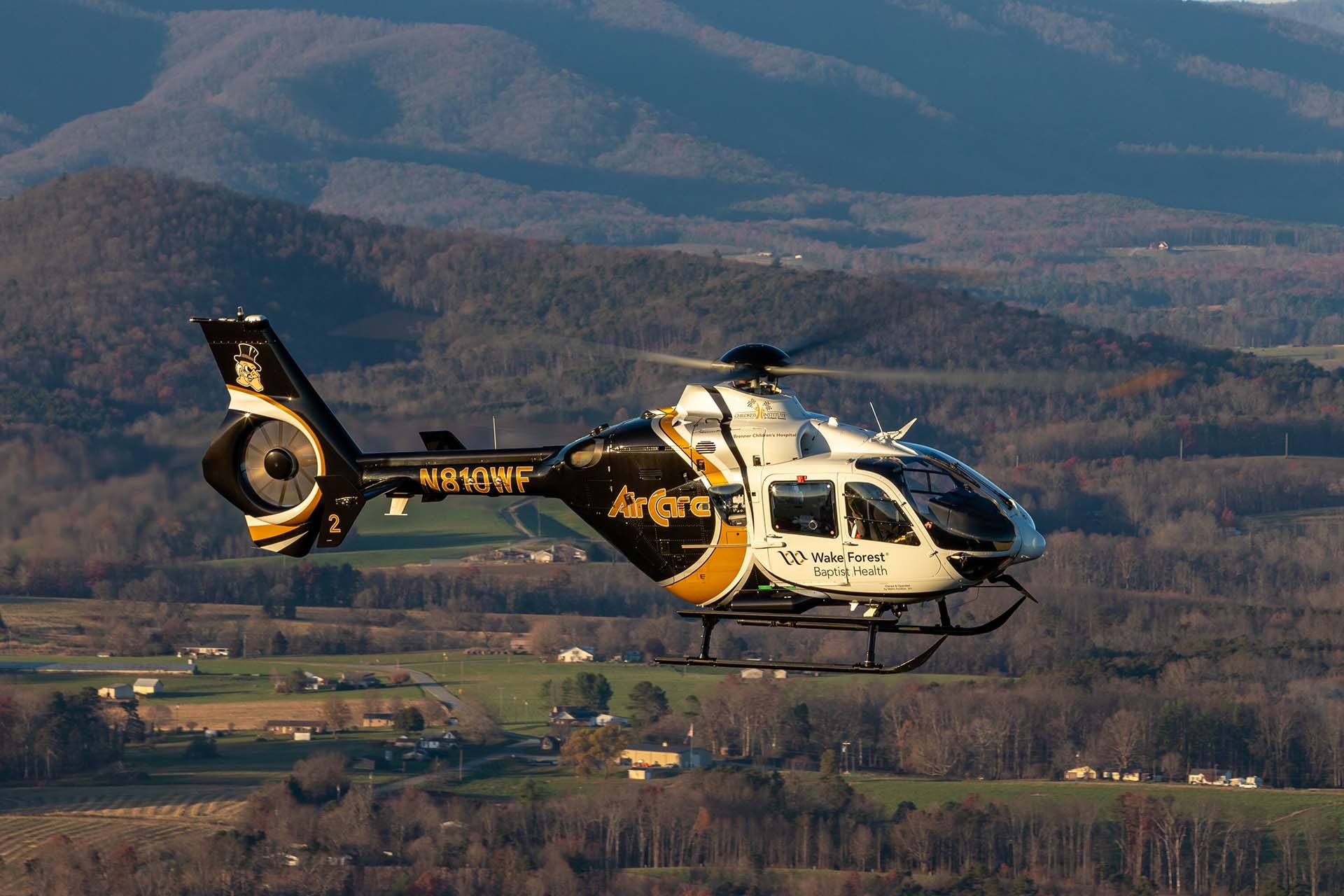In May of 2021, Atrium Health Wake Forest Baptists air ambulance program celebrated a 35-year history since its first flight in May 1986. During that time, the AirCare program has transported nearly 26,000 patients and has grown from one to four helicopters and six critical care ground ambulances, transporting individuals across North Carolina, Virginia, West Virginia, Tennessee, and South Carolina.
AirCare
For the last three years, AirCare has contracted with Metro Aviation for the provision of the AirCare program’s air assets, entailing a shift in equipment, policies, and procedures after previous operations with other service providers. The helicopters operate from three AirCare bases, each equipped with a dedicated EC135. One aircraft is based at the Wilkes County Airport in North Wilkesboro, one at Martinsville’s Blue Ridge Airport in Henry County, Virginia, and the third is based at the Davidson County Airport in Lexington (along with the dedicated spare aircraft, which is repositioned to any of the other bases as it is needed from time to time). Flight crews and medical personnel all report that the community acceptance and approval of the program is extremely positive, with many residents related to, or acquainted with, those transported by the program.
Cody Cheek always wanted to fly and is now the Lead Pilot at Wilkes. He began his career in the military, briefly copiloted a Bell 412 for about a year in 2000, then went to fly in the Gulf. “Then I got into EMS, and I came back here in 2010 on the EC130 at around the time the extra bases were added, then onto the EC135 when we switched to Metro Aviation in May 2018,” he recalled. “The EC135’s a good aircraft and it’s always good to have dual engines, but the EC130 was also a good aircraft for what it was. Changing to the 135 from the 130 was just a case of getting used to the differences and, as we’ve built up time in the new type, we’ve pretty much figured out what we can and can’t do in the aircraft.” One advantage of the larger aircraft type became evident with the outbreak of Covid-19, when the greater separation of the pilot from the patient and medical crew enabled a much less restrictive Covid-protection regime for the pilot. The crew in the back, however, suffered the same discomfort as everyone else in the industry, with the required extra layers of PPE and additional time taken for preparation and patient care or transfer.
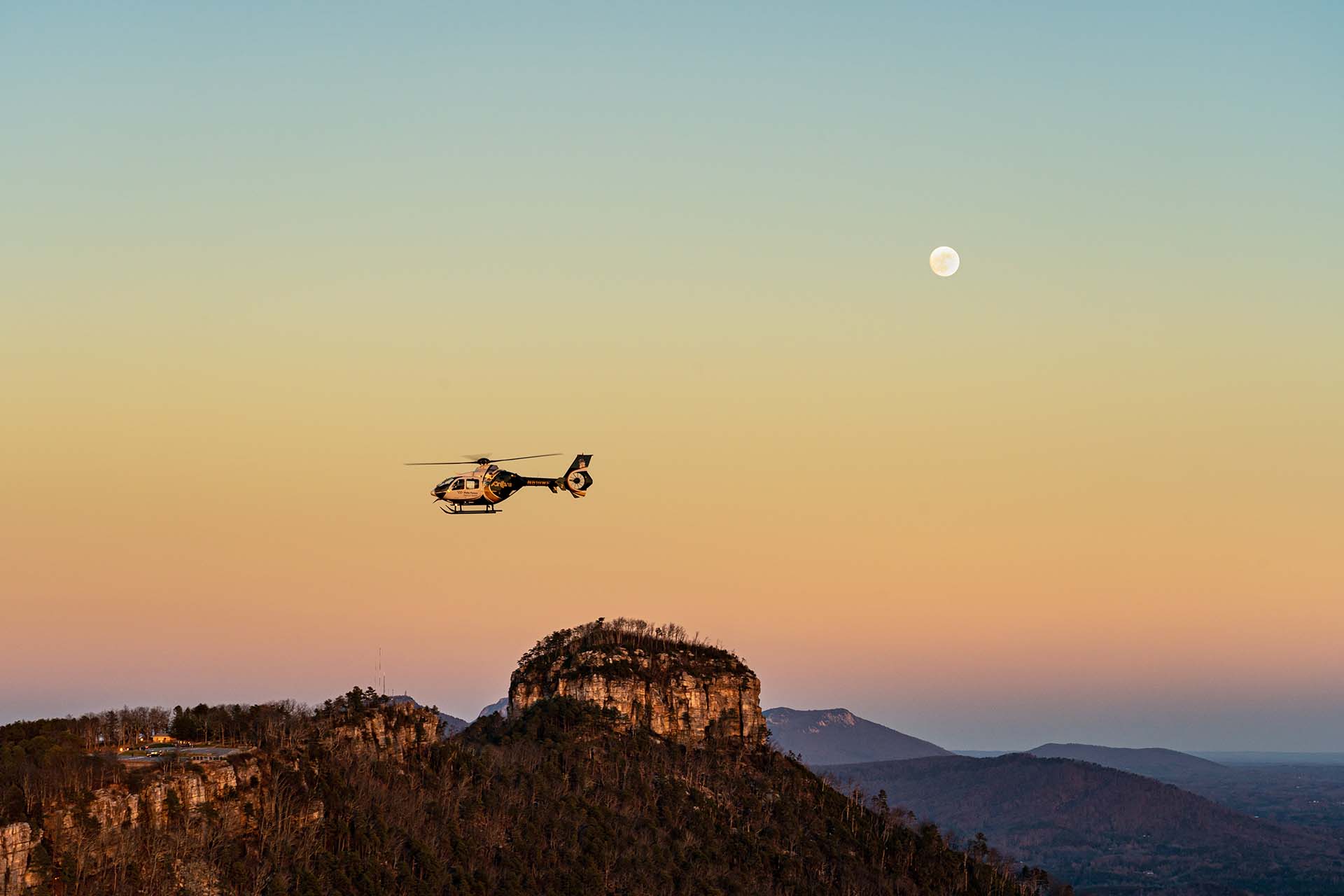
Bases
AirCare’s three bases are essentially triangulated around the hospital at Winston-Salem and Cheek advised that the standard operational radius is around 150nm from base. He noted that missions have been flown much further as required by circumstance, especially if a machine is based closer to a transferring facility but requiring a longer overall elapsed return flight time. “The hospital’s dispatch center takes incoming requests and dispatches the nearest helicopter. ‘Medcom’ [the name of the hospital’s communication/dispatch center] then builds that flight and sends it to the pilot, and Metro’s Operational Control Center in Shreveport will see that as well, double check the weather and act as a ‘fourth man’ and extra safety oversight,” he explained.
David Donaldson is the program’s Aviation Site Manager for Metro Aviation and has been with AirCare since 2010. He came to the air medical industry from the civilian side as his military experience was not as a pilot, recalling, “I saw a few search and rescue operations on training events. I knew I wanted to fly and to get out of the military where I’d spent so much of my life, so I fell in love with the idea of doing SAR and helicopter EMS. I feel I was born to do this, and I’ll probably be doing it until I don’t fly anymore.” He advised that the program currently completes around 1,400 flights each year, typically averaging around 116 per month and Cheek estimated the ratio of interfacility transports to scene calls to be about 75% to 25%. Samantha Hill, an experienced registered nurse and a flight nurse in the program for two years, added that areas with fewer paid EMS ambulance services tend to generate a higher proportion of scene calls for AirCare.
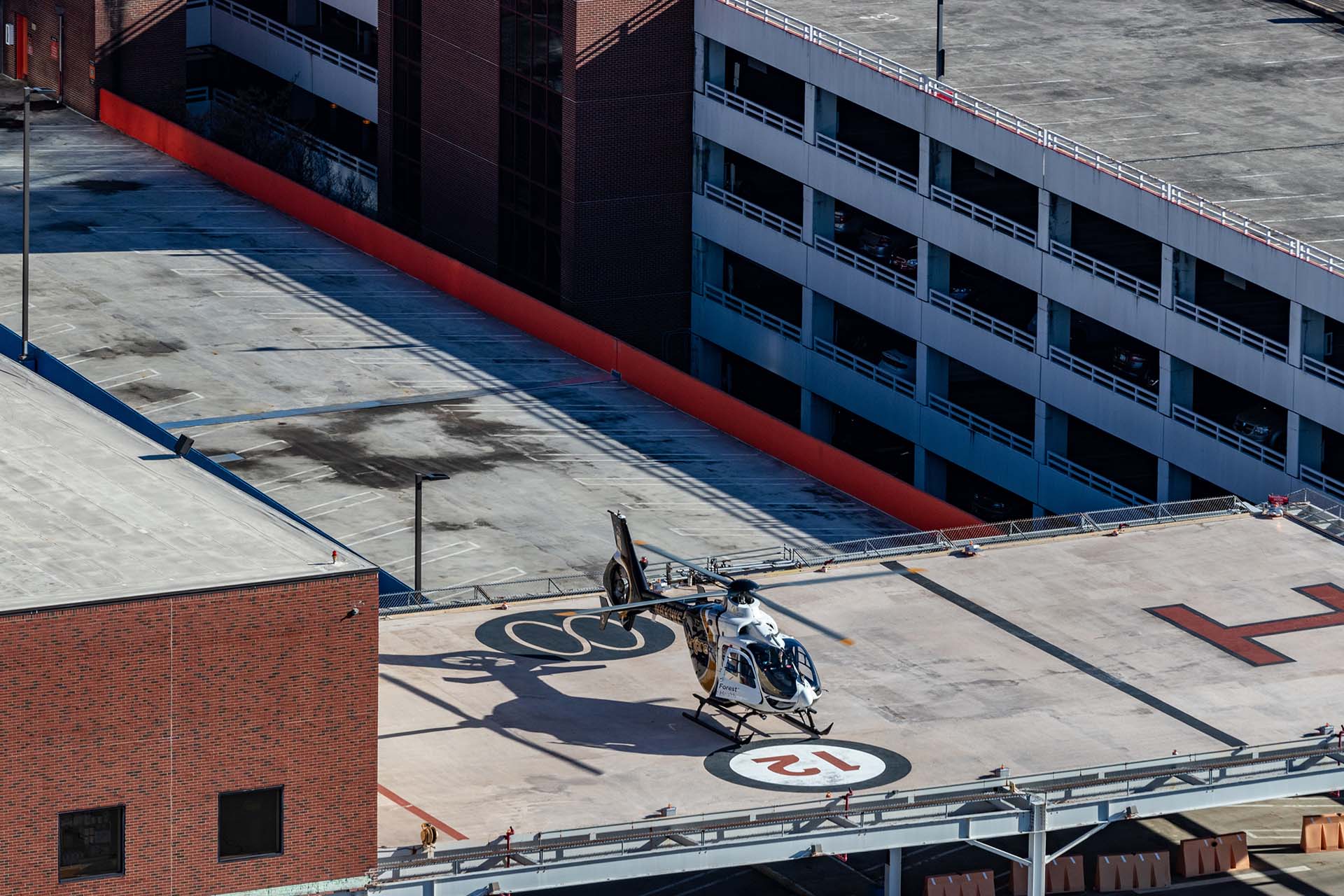
Helicopter Capability
Matt Williams, who has been an AirCare flight paramedic for nine years, echoed Hill’s comments and remarked that much depended on the particular area in which a call originated. “The skill level available can vary from one agency to another and even though many of the local agencies can do a lot, there are things that we can do as a helicopter EMS unit that they can’t. And time to transport is also often a big issue. By car, Atrium Health Wake Forest Baptists Hospital is about an hour away from Wilkes, but we can get there in about thirty minutes or less via helicopter,” he said, elaborating that the air unit can do everything that a ground ambulance crew can do on the street but to a more advanced level, and he wishes that that was more widely understood. “As we grow and increase our experience and equipment, that level continues to rise.”
“The biggest thing for us recently is the inclusion of Tranexamic Acid (TXA) and blood products, which is something that a lot of ground ambulances can’t do,” he stated. “To put it simply, I tell people that we can do just about anything in the back of the helicopter that a hospital emergency department can do, except surgery. Some people in the medical field however, even some doctors, still don’t understand the depth and medical complexity of what we can do pre-hospital and see us as little more than a taxi service.” He noted that the range of equipment and medical capabilities has expanded dramatically since he started working in the industry and pointed out that advances such as airborne ECMO units came with a weight penalty that would eventually lead to the need for even larger aircraft than the program’s EC135s. Hill observed that the greatest difference she noticed when transitioning from the hospital ED to the helicopter was the much greater autonomy, explaining, “I couldn’t intubate in the ED, but I can do that now with my partner if needed. There is so much critical thinking and decision making that I now do with my partner that I never had to worry about in the hospital environment.”
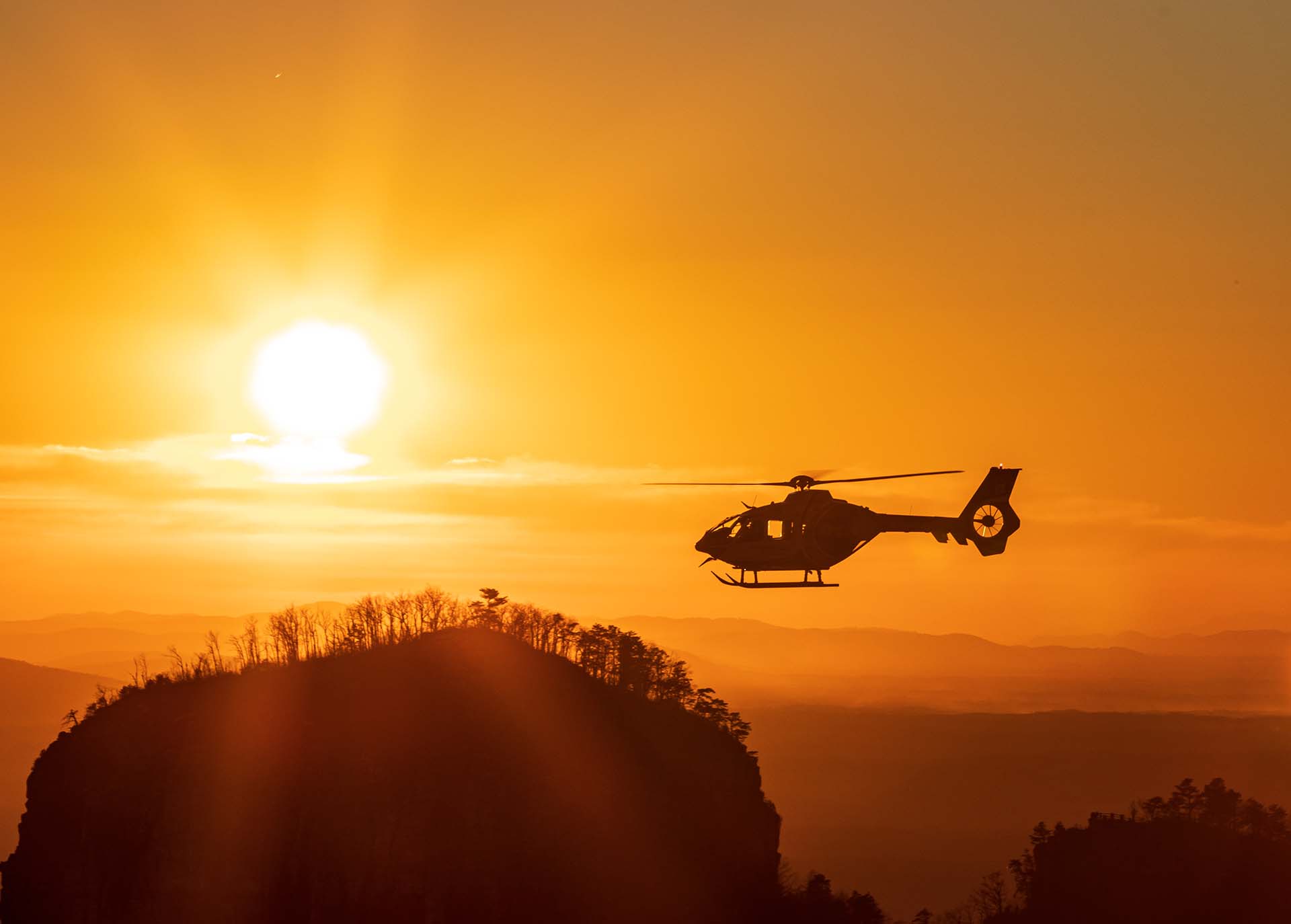
Transition
Cheek commented that the transition to Metro Aviation involved adapting to new and slightly different rules, regulations and procedures for the incoming company, but that most of the training and qualification requirements remained the same. “From my point of view, it’s been a good transition and I’m happy. I think it showed great foresight for the hospital to elect to have a dedicated spare aircraft, so availability is much better than it would be without a spare,” he reported. The spare aircraft is identical to the three other machines, including the standard Metro Garmin avionics and medical interior, and so swapping between aircraft does not introduce any problems related to familiarity with the aircraft or the medical equipment. Prior to the Metro contract, swapping to a spare aircraft meant changing types as there were no available EC130s to replace the in-service machines. Donaldson stated, “That’s something exceptional that Metro’s brought us and as long as I’ve been in the EMS world, it’s been virtually unheard of that you get such a nice helicopter and an identical configuration to be your backup.” Maintenance is done either on site at each base or, in the case of major maintenance, at the Lexington base, and both Cheek and Donaldson are highly complimentary of the maintenance personnel and of Metro’s maintenance-driven ethos, which combine to keep all the aircraft excellent condition.
The previous VFR-only program is now operated IFR, and Cheek noted the increased peace of mind that comes with having the ability, training, and confidence to operate in conditions that deteriorate or are below VFR to begin with. “It’s good, you have the autopilot and IFR just gives you that extra option in cases of IMC where you need it and it’s safe.” Night fights utilize white phosphorous NVGs, and Cheek finds the newer version better to fly with, a little clearer with better depth perception than the earlier green-phosphorous goggles. Wilkes has localizer, ILS and two RNav approaches, while helicopter special approaches have recently been established for a hospital at Boone, one at Twin-County in Virginia, and into and out of Atrium Health Wake Forest Baptist Hospital. “That works really well for us, but I don’t know that it would make much sense in other areas as we’re co-located so close to the facilities,” said Cheek. The program works to Metro’s standard safety policy of ‘three to go, one to say no’ and he said that there was never any pressure put on crews to accept or complete a call, other than the internal pressure they put on themselves; an issue dealt with by good CRM and self-discipline. Regarding that, Hill expressed her appreciation to the pilots for always conferring with the medical crews to determine their concerns and comfort level with any critical flight decisions, including weather go/no-go choices.
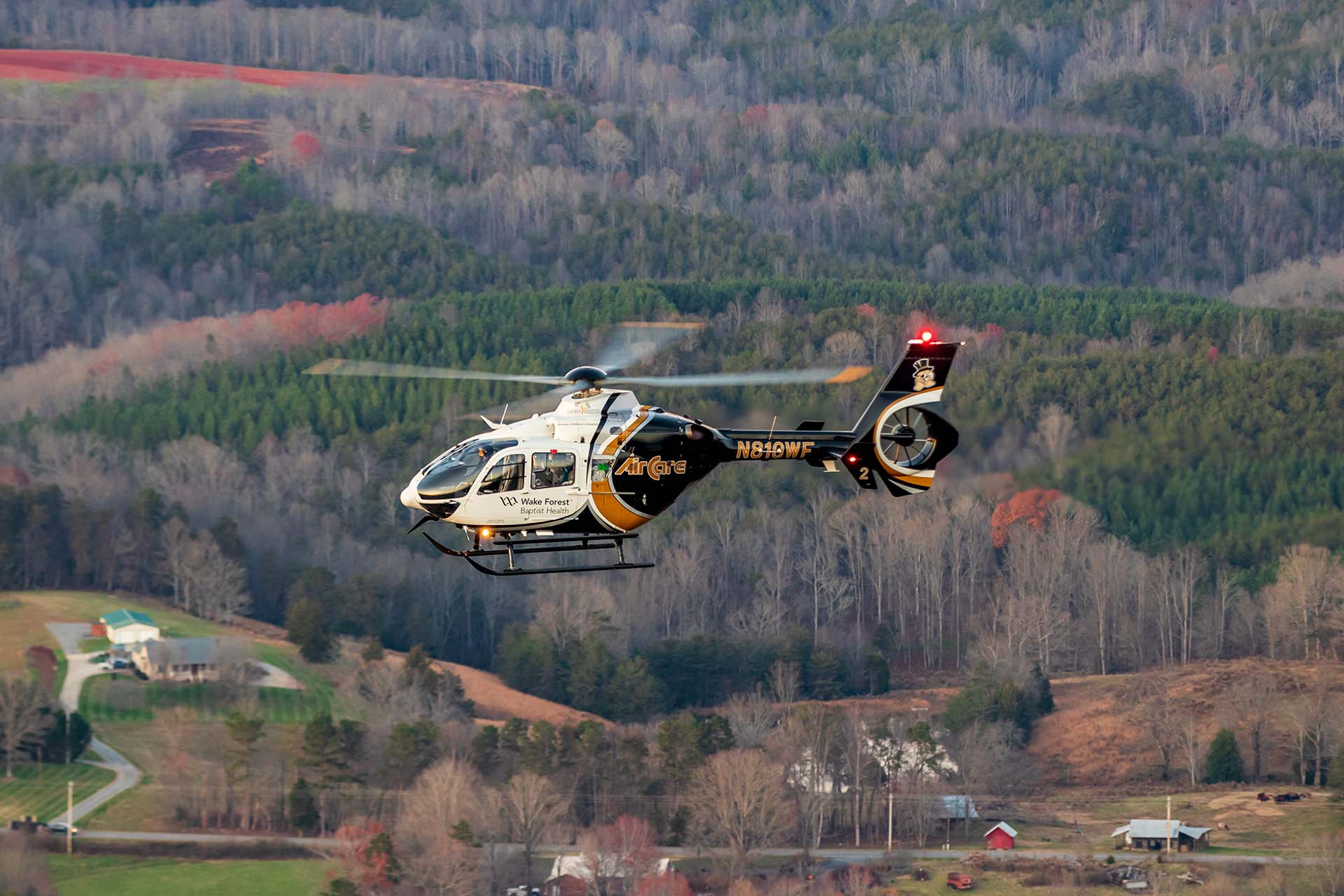
Every Call Unique
A constant challenge faced by the AirCare pilots is that every scene call is to a unique and usually previously unknown location, as Cheek explained. “It was something to get used to coming up here at the edge of the mountains. Some of the areas we’ve gone into can be pretty tight – especially at night – even though they meet the criteria, and from the air on googles they look pretty small. I remember one evening we landed on a bridge northwest of here in a small valley with no lights, so all we had was the lights from the aircraft and the ground crews. You have to figure out every off-airport or off-facility landing when you get there.” Although he admits that it is always nice to have another pilot to assist with workload, Cheek has been flying single pilot for most of his career since 2000 and has no problem with continuing to do so. Training classes are conducted for other agencies as requested through the hospital and coordinated with Donaldson, to ensure that ground crews have the necessary knowledge and perspective to effectively locate and describe landing zones for the incoming aircraft. “I think that overall, we do a pretty good job of telling people what we need to know,” Cheek elaborated, “but someone’s perception from the ground is often different than from the air, and something they see as a non-issue could actually turn out to be a real problem. We always assume every road has wires. Once we get overhead, we always evaluate the situation ourselves, ask questions, and get any extra information we might need. In the majority of areas we go to, the guys have done a pretty good job.” Another aspect that he is very aware of is that the safety of everyone on board, be it flight crew, medical crew, or patient, depends on the professionalism and ability of the pilots in an operation where every scene call presents its unique characteristics and challenges.
When Hill moved to the AirCare program she found the greatest challenges to be the challenging oral boards required to prove her suitability for the flight nurse position, and the exacting and constant concentration on safety. “I found I was suddenly so aware of things like towers and birds, even when I was driving on the highway,” she remarked, “things that I was never really aware of when I worked in the hospital. I love it now though, and it’s the best job I’ve ever had. It’s challenging but it can be really fun.” Hill first realized she wanted to move into air medical when she was involved with a critically injured patient that had to be transferred by air and she saw first-hand the aircraft and crew arriving on scene and carrying out their roles. Williams has a background as a professional paramedic and appreciates the complimentary nature of the team dynamic between the onboard nurse and paramedic, opining, “We train differently, with paramedics specialized in pre-hospital care and nurses coming from a hospital care environment. On the aircraft that means that, if I fall short in a particular area, the nurse will have it as a strength and vice-versa. Then, as we progress in our careers as a team, we learn both sides and become more broadly capable across the full spectrum of emergency care. With our access to more advanced care than street paramedicine, we must learn to be a paramedic, nurse, pharmacist, doctor, and perfusionist, all at the same time.”
He noted that medicine is constantly changing, evolving, and improving in technology and techniques that can make aerial EMS a daunting prospect for any new entrant to the field. Williams said that he had always wanted to eventually be on the helicopters, ever since he started working as a paramedic and saw them in action. “You watch the crews work and realize that they have done just about everything and are so competent and squared away, you just want to be at that level, doing what they do.” Donaldson added that the advances in pre-hospital care are rolling in at an increasingly rapid pace and Cheek pointed out that there is also a certain amount of aviation knowledge and tasks that the medical crews are required to learn and carry out.
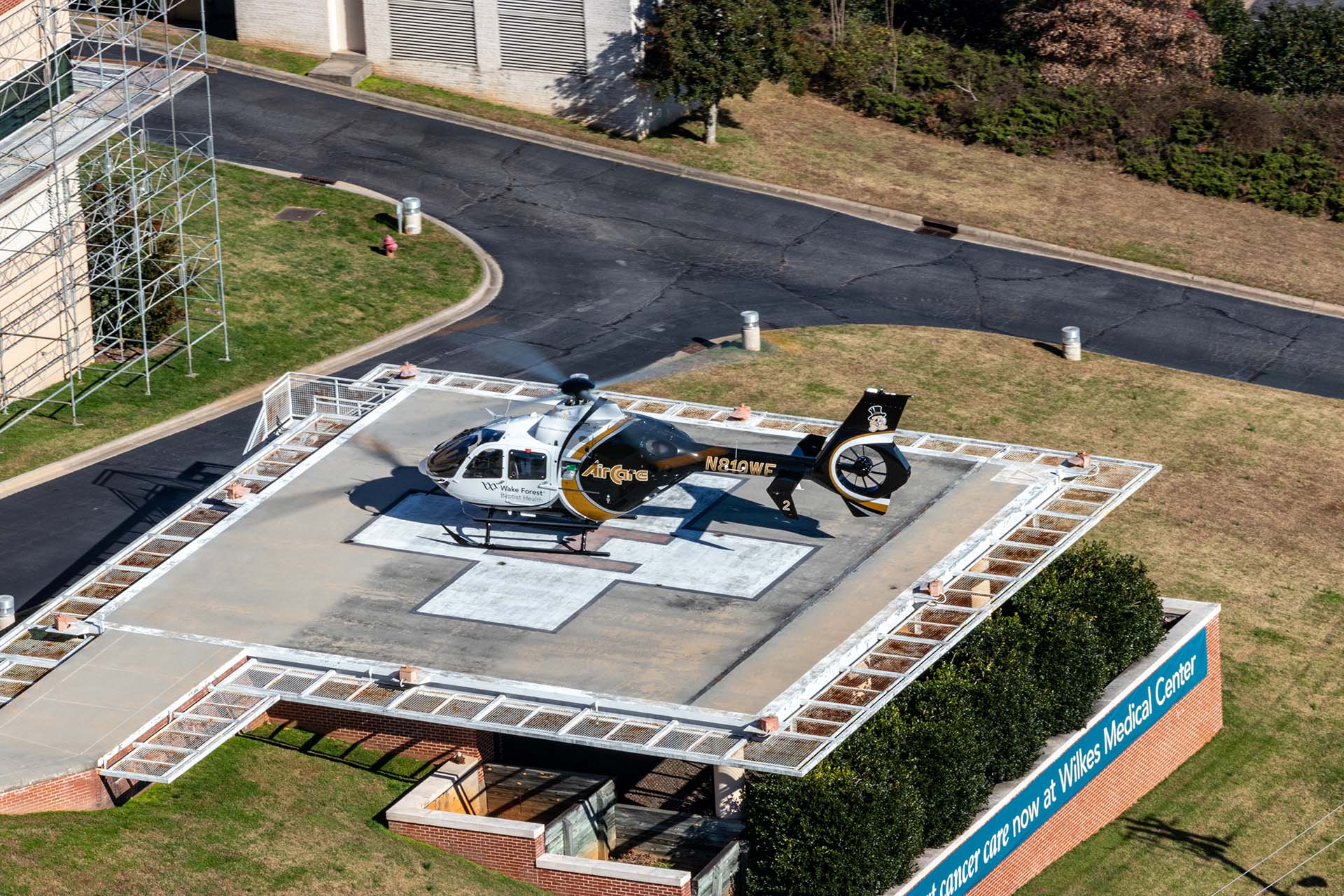
Progression
After a pilot is hired by Metro and completes their training and check-ride at Metro’s Helicopter Flight Training Center in Shreveport, Louisiana, they move to the operational base at which they’re stationed for a one-on-one with that base’s lead pilot. They then carry out day and night orientation flights and operational familiarization, including additional NVG time if necessary. When the lead pilot is satisfied that the new pilot is ready for active duty, Metro is notified and the pilot is signed off for operational duty at that particular base. If a pilot transfers to a different base, the same process is repeated, even if the new base is part of the same program. The medical crews are required to undergo a helicopter flight school, which Donaldson half-jokingly refers to as ‘death by PowerPoint’. “It’s about an eight-hour PowerPoint that covers radios, internal comm’s, weather, a walkaround of the aircraft, pilot decision-making and even some maintenance basics,” he described. After the course, the crew also undergoes orientation with one of their seniors and receives instruction and experience under NVGs, both of which can be quite lengthy processes. “Typically, we try to keep most new employees on the ground for at least a year or so, depending on their skill level and how well they’re able to transition to the next level,” added Williams. “During that time, they work with the aircrews when they come in so they’re learning safety around the aircraft and gaining familiarity with it.
Satisfaction in the Job
All AirCare personnel spoken to, related that one of the greatest rewards in the job was the satisfaction of having someone survive, in circumstances where the likelihood of that was minimal had the helicopter service not been available. There is often ongoing follow-up from medical calls and sometimes the opportunity arises to speak to and be thanked by someone whose life was saved, years after the event. “This is a relatively small area and sometimes you’ll stop on the way home, maybe to get gas or something, and a total stranger recognizes you, comes up and thanks you for what you do,” added Cheek. “It also gives me satisfaction every time I come back after getting someone in need where they have to be, knowing that I’ve made good enough decisions to make sure that happens and we all get home safely.” He candidly admits that his favorite aspect of the industry is the flying. “It’s nice to be able to fly on someone else’s dime and we have nice equipment. Sure, there are times when it’s not wonderful, called out at two in the morning, but overall, it’s great. I always wanted to fly and here I get to fly a little more than I would in many other places.” Unsurprisingly, flight nurse Hill most enjoys taking care of the patients, commenting, “It’s like being an investigator, figuring out what’s wrong with them and trying to fix them.” Donaldson takes great satisfaction and enjoyment from looking after people, and now he is aviation manager, looking after the pilots, while for Williams, the team aspect is crucially important. “We live by the team dynamic and, you know, we’re here more than we’re at home, so this is like our other family,” he concluded.
 HOME
HOME


